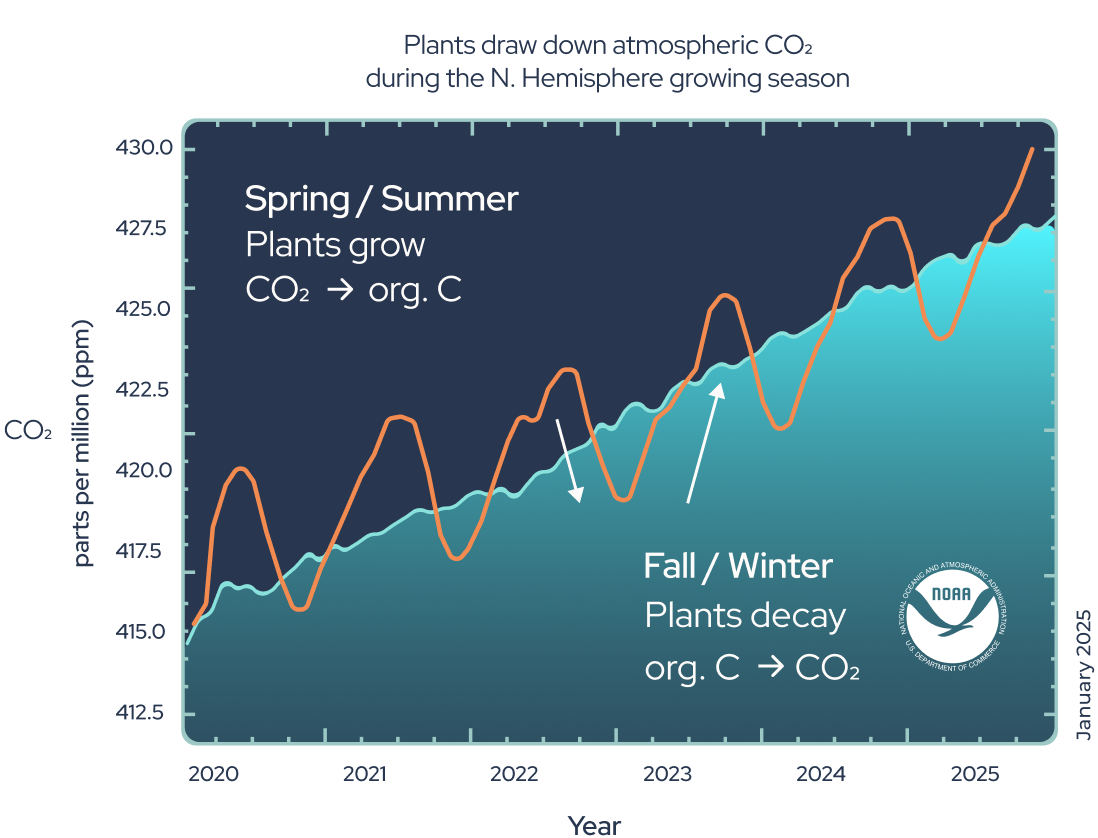.svg)
.svg)
With human emissions trends, an annual sawtooth pattern shows the annual cycle of plant growth in the Northern Hemisphere. Between April and October, land plants convert ~100 Gt C from atmospheric CO2 to organic carbon. This carbon returns to the atmosphere when plants decay or are eaten. Massive negative emissions can be achieved by stopping the remineralization of this OM. This is what Carboniferous aims to do.
.png)



In order to keep carbon out of the atmosphere for a thousand years or more, we use terrestrial materials that are rich in hard-to-break-down molecules like lignin and cellulose. Agricultural byproducts are an ideal source of this type of organic carbon because the leftover plant stalks, and the infrastructure to sustainably harvest and transport them, already exist. Our research program includes sugarcane bagasse, corn stalks and leaves, and wheat straw as potential biomass types.
.png)
Our interdisciplinary team conducts research to assess the effectiveness and environmental impacts of large-scale anoxic basin carbon storage for climate mitigation, relying on rigorous and transparent methods to guide our sequestration efforts.
.png)


.svg)


Safety is the key goal at every step of Carboniferous’s process. It’s essential that we achieve safety and protection in every aspect of what we do.
Learn MoreAnoxic basins, often referred to as 'dead zones,' are crucial ecosystems with oxygen-depleted waters that are highly pertinent to carbon sequestration
Learn More
.svg)